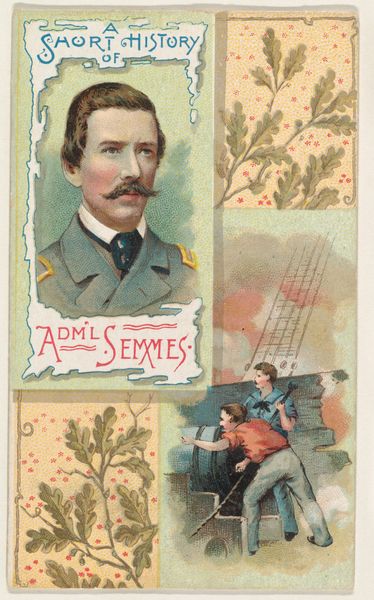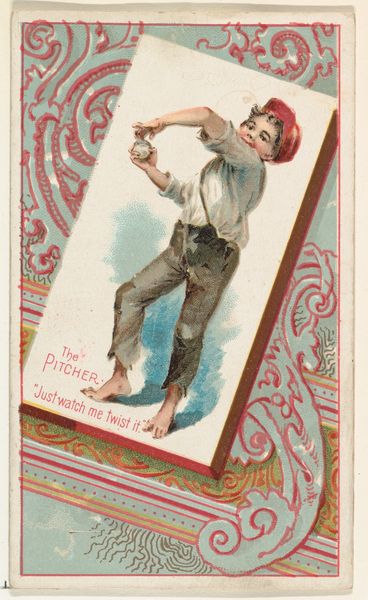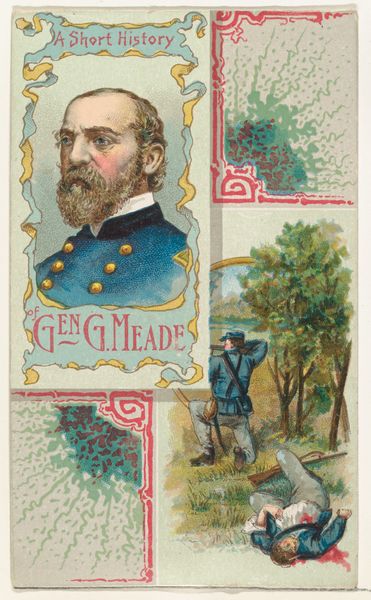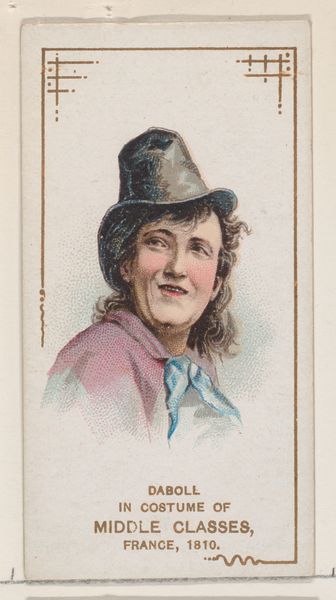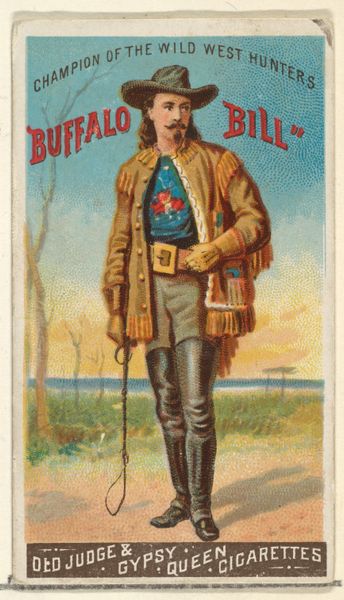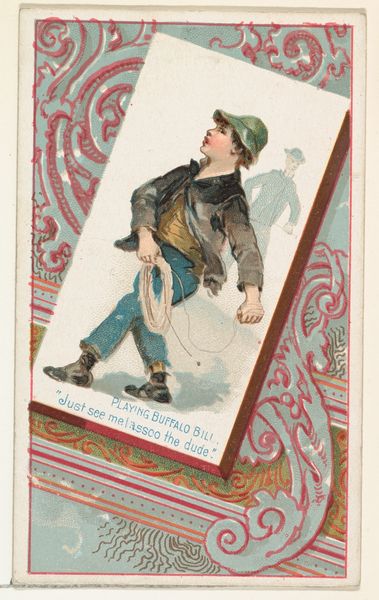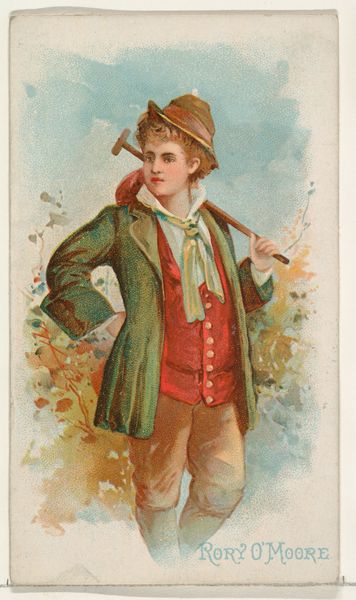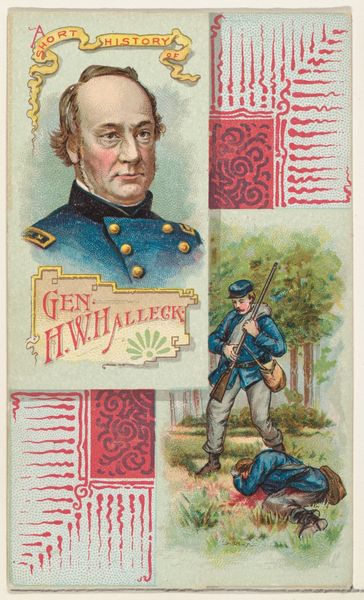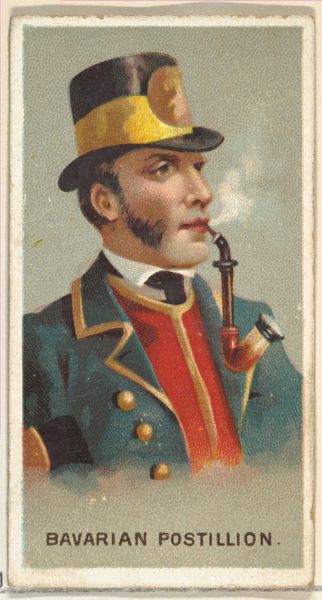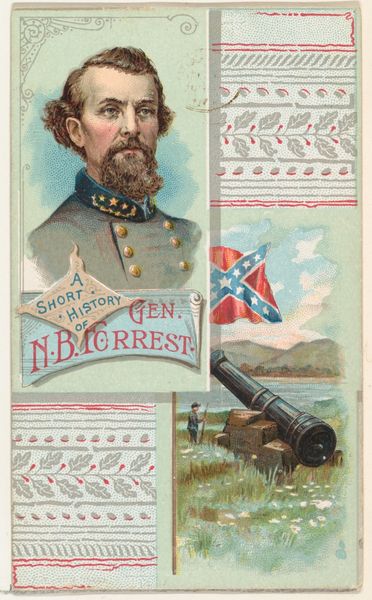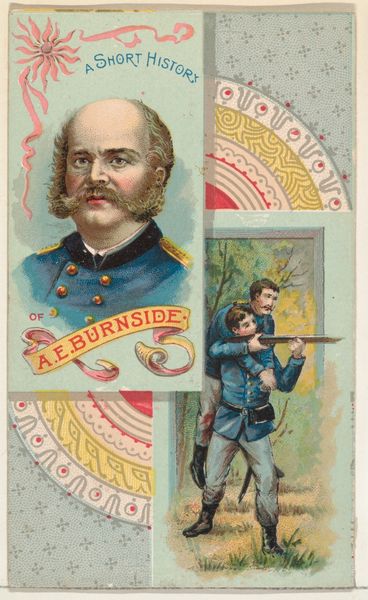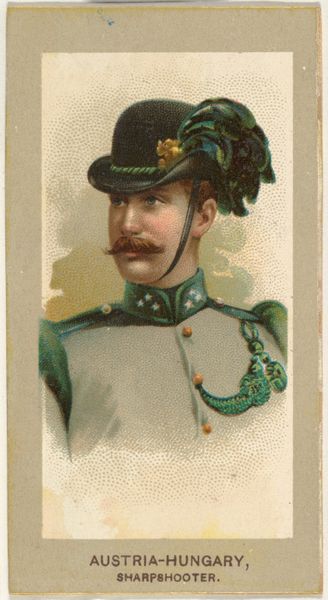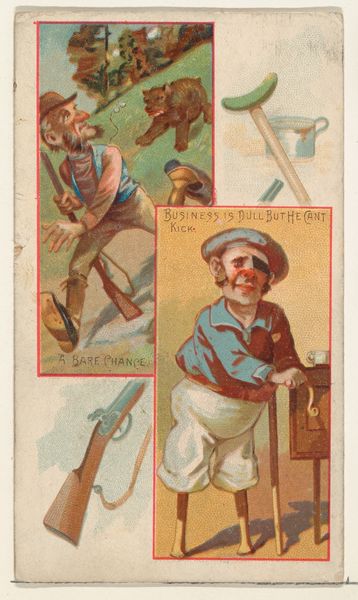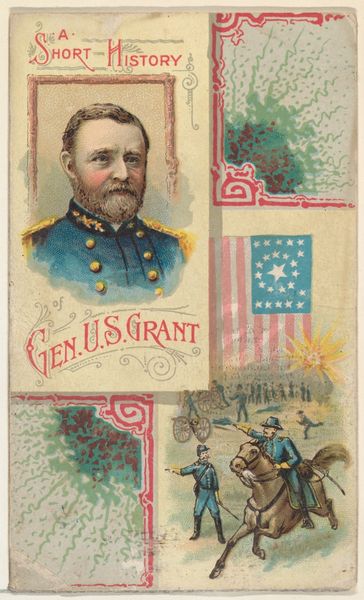
A Short History of General Braxton Bragg, from the Histories of Generals series (N114) issued by W. Duke, Sons & Co. to promote Honest Long Cut Smoking and Chewing Tobacco 1888
0:00
0:00
drawing, coloured-pencil, print, albumen-print
#
portrait
#
drawing
#
coloured-pencil
# print
#
coloured pencil
#
history-painting
#
albumen-print
Dimensions: Sheet: 4 3/16 × 2 1/2 in. (10.7 × 6.4 cm)
Copyright: Public Domain
Curator: Here we have a lithograph titled "A Short History of General Braxton Bragg," created around 1888 by W. Duke, Sons & Co. It's from their "Histories of Generals" series, originally included in tobacco products as promotional items. It's quite small, intended to fit within a cigarette pack. What are your initial impressions? Editor: Stark. There is something inherently contradictory in the way the soft colors try to offset what amounts to an advertisement of war, a promotion of the ‘lost cause,’ one might even say a type of celebration of that. This creates dissonance for me. Curator: It’s a piece of propaganda, no doubt. Bragg’s legacy is certainly complex. Historians often critique his strategic abilities, linking them to Confederate defeats, but within the Lost Cause narrative, figures like him were romanticized. Look at the surrounding details. Are there patterns emerging? Editor: Absolutely. The repeated oak leaf motif. Oak leaves frequently symbolize strength, endurance, and resilience. Its presence could be interpreted as reinforcing the image of the Confederacy, and Bragg specifically, as steadfast and unyielding, or a visual suggestion to preserve that image through time. It is an emblem of Southern cultural memory. Curator: Indeed. Note the contrasting images: the formal portrait and the active battle scene. One depicts the individual, while the other attempts to capture him embedded within his military performance. It all feeds into a larger narrative. What effect does this layering produce? Editor: Well, it produces two possible ones. First, in his own lifetime, there was arguably a disjunction between how he may have seen himself versus how history has recorded it. Also, there may be some level of propaganda or myth building inherent within that. Curator: This item really reflects the intersection of commerce, memory, and ideology. It is also another clear and stark example of how historical context changes how images are used, consumed and what purpose they may ultimately fulfill. Editor: Agreed. It offers us today a rich starting point for dialogues about that intersection, about what aspects we have ultimately decided to retain in cultural memory, what the value is of questioning it and exploring art as an active political force.
Comments
No comments
Be the first to comment and join the conversation on the ultimate creative platform.
